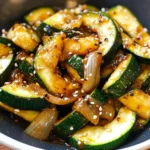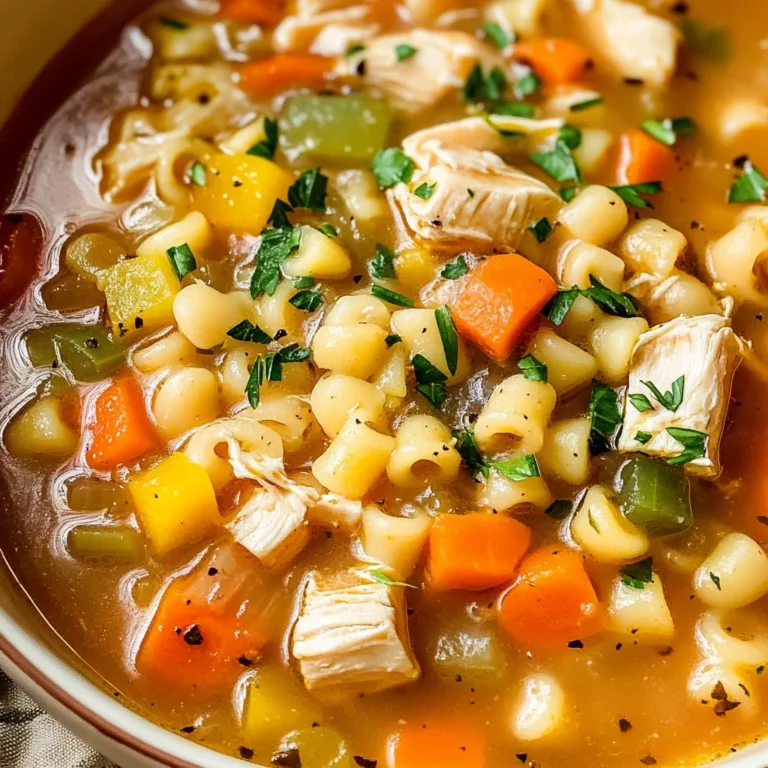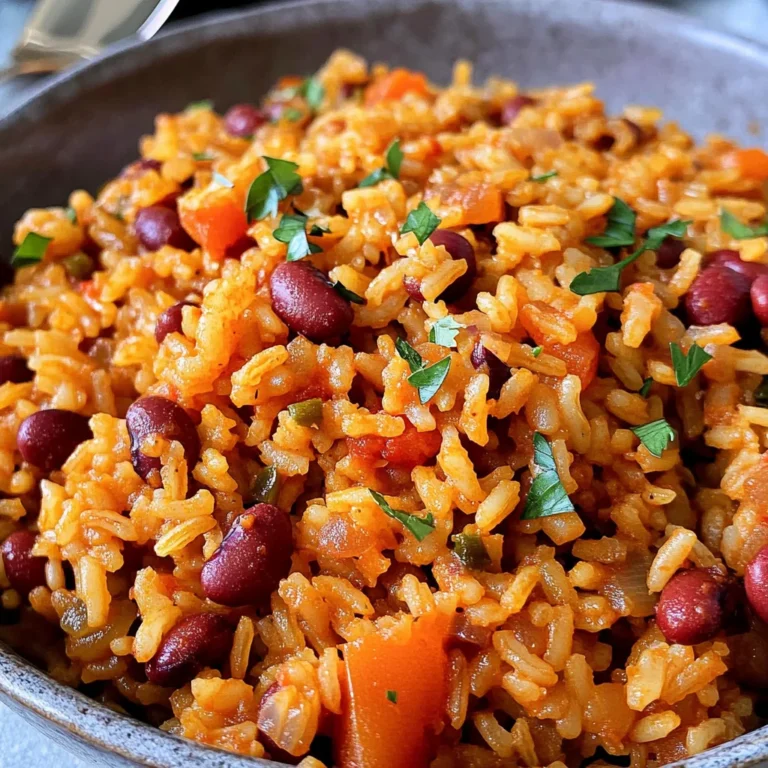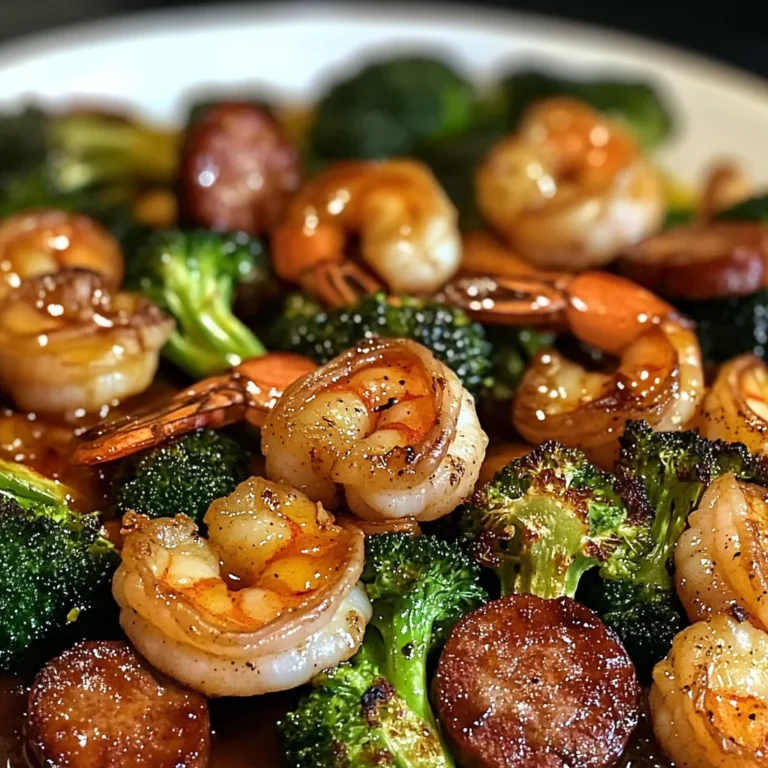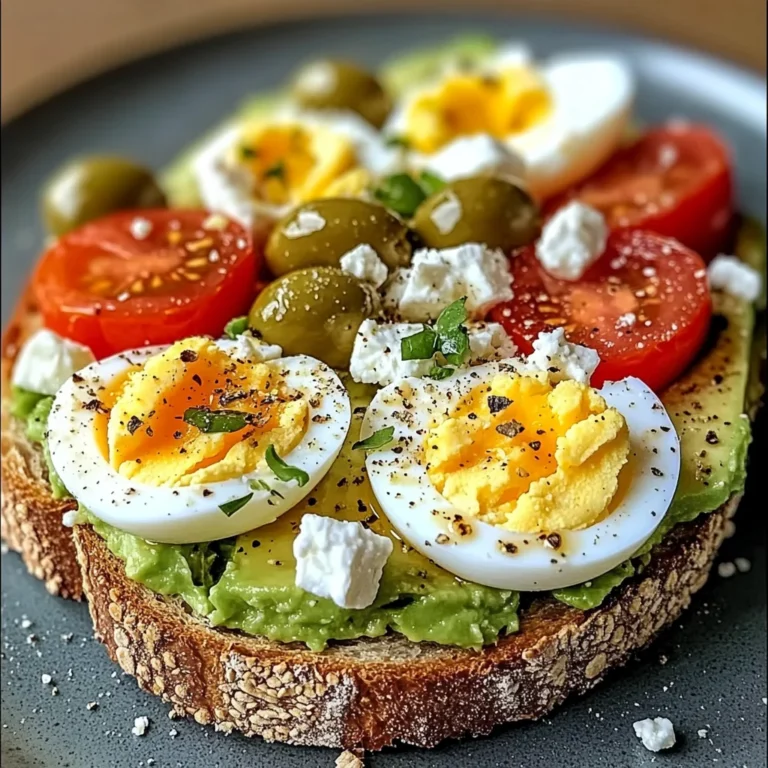Japanese Zucchini
Japanese Zucchini is a delightful dish that combines sautéed zucchini with sweet onion, soy sauce, and teriyaki sauce. This quick and easy recipe shines as a side dish for any Asian meal or pairs perfectly with grilled seafood, chicken, or steak. With its vibrant flavors and simple preparation, this recipe is sure to impress at family dinners or gatherings.
Why You’ll Love This Recipe
- Quick Preparation: With just 7 minutes of prep time, you can whip up this dish in no time.
- Flavorful: The combination of soy sauce and teriyaki sauce creates an irresistible umami flavor.
- Versatile Side: Perfectly complements various main dishes, from grilled meats to rice bowls.
- Healthy Option: Packed with nutrients, this vegetarian side adds valuable vegetables to your meal.
- Easy to Customize: Adjust the spice level by modifying the amount of red pepper flakes to suit your taste.
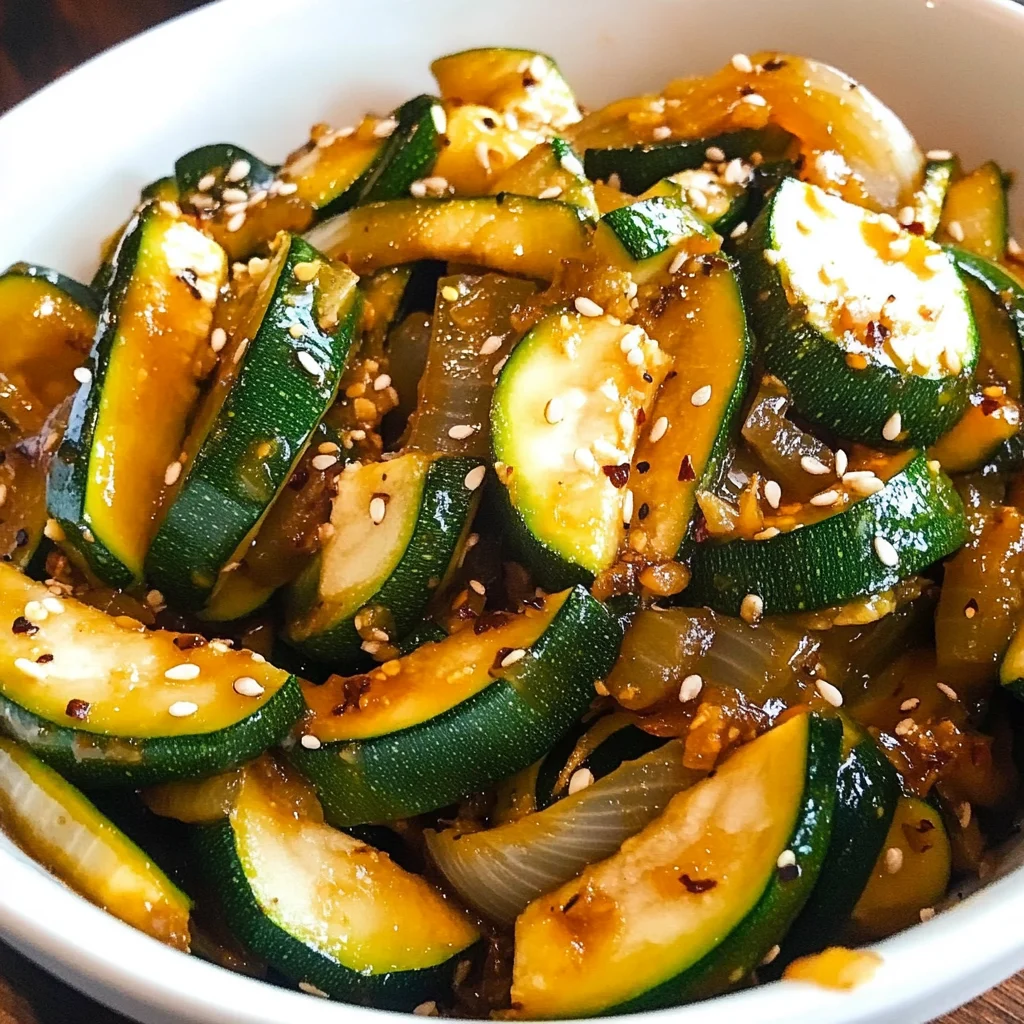
Tools and Preparation
To make Japanese Zucchini, having the right tools makes the process much smoother. Here’s what you’ll need:
Essential Tools and Equipment
- Nonstick skillet
- Cutting board
- Sharp knife
- Measuring spoons
Importance of Each Tool
- Nonstick skillet: Prevents sticking and allows for easy cooking and cleanup.
- Sharp knife: Ensures precise cutting of zucchini and onion for even cooking.
- Cutting board: Provides a safe surface for chopping ingredients without damaging countertops.
Ingredients
Japanese Zucchini is sauteed with onion in soy sauce and teriyaki sauce plus a few red pepper flakes for spice. Makes a great side dish for any Asian meal or grilled seafood, chicken, or steak.
For the Vegetable Base
- 3 medium zucchini
- 1 medium sweet onion (coarsley chopped)
For the Sauces and Seasonings
- 2 tablespoons vegetable oil
- 2 tablespoons teriyaki sauce
- 1 tablespoon soy sauce
- 1/4 to 1/2 teaspoon crushed red pepper flakes
- 1/4 teaspoon black pepper
For Garnishing
- 1 teaspoon toasted sesame seeds
How to Make Japanese Zucchini
Step 1: Prepare the Zucchini
- Cut zucchini into 2-inch long pieces.
- Cut each piece into 6 wedges.
Step 2: Heat the Skillet
- Heat vegetable oil over medium-high heat in a large nonstick skillet.
Step 3: Sauté Vegetables
- Add zucchini and onion to the skillet.
- Cook for 2 minutes until they begin to soften.
Step 4: Add Sauces and Seasonings
- Pour in teriyaki sauce, soy sauce, red pepper flakes, and black pepper.
- Cook for an additional 4 to 5 minutes or until vegetables are soft enough for your liking.
Step 5: Serve
- Sprinkle with sesame seeds before serving.
- Enjoy this delicious Japanese Zucchini as a perfect side dish!
How to Serve Japanese Zucchini
Japanese Zucchini makes a versatile and delightful side dish that pairs well with many meals. Here are some creative serving suggestions to enhance your dining experience.
With Grilled Chicken
- The savory flavors of Japanese Zucchini complement the juicy tenderness of grilled chicken perfectly, adding a fresh touch to your plate.
Alongside Teriyaki Salmon
- Serve the zucchini next to teriyaki salmon for a complete Asian-inspired meal. The sauces in both dishes will harmonize beautifully.
As Part of a Rice Bowl
- Incorporate Japanese Zucchini into a rice bowl topped with your choice of protein. This adds color and nutrition, making every bite satisfying.
With Stir-Fried Vegetables
- Pair it with other stir-fried veggies for a colorful and healthy side. This combination brings out the best in each ingredient.
On a Salad
- Toss cold, sautéed zucchini into a salad for an added crunch and flavor boost. It works wonderfully with mixed greens and sesame dressing.
How to Perfect Japanese Zucchini
To achieve perfectly sautéed Japanese Zucchini, consider these essential tips for the best results.
-
Slice Evenly: Make sure all zucchini pieces are cut uniformly for even cooking. This ensures they cook through at the same rate.
-
Use High Heat: Sautéing on medium-high heat helps achieve a nice sear while keeping the zucchini tender-crisp. Avoid overcooking to maintain texture.
-
Add Sauce Later: Introduce teriyaki and soy sauces midway through cooking. This prevents burning and allows the flavors to meld without overpowering the zucchini.
-
Experiment with Spices: Feel free to adjust red pepper flakes according to your heat preference or try adding garlic for an extra layer of flavor.
-
Garnish Thoughtfully: A sprinkle of toasted sesame seeds not only enhances presentation but also adds a delightful nutty flavor that complements the dish.
Best Side Dishes for Japanese Zucchini
When serving Japanese Zucchini, consider these delicious side dishes that pair well with its unique flavor profile.
-
Steamed Jasmine Rice
A fluffy base that soaks up all the delicious sauces from any main dish while providing a neutral backdrop for the zucchini. -
Sesame Noodles
These flavorful noodles bring an Asian flair that complements the taste of Japanese Zucchini, making them a perfect match. -
Grilled Shrimp Skewers
Juicy shrimp add protein and richness, balancing beautifully with the lightness of sautéed zucchini. -
Miso Soup
A warm bowl of miso soup adds depth and warmth, creating an inviting contrast to the vibrant zucchini dish. -
Asian Slaw
A crunchy slaw tossed in sesame dressing offers a refreshing contrast while providing additional textures alongside the vegetables. -
Fried Rice
A savory fried rice brings heartiness to your meal, making it more filling while harmonizing flavors effectively with zucchini. -
Cucumber Salad
Light and crisp, this salad provides freshness that complements the sautéed zucchini without overwhelming it. -
Eggplant Stir-Fry
Another veggie option, eggplant stir-fry enhances your meal’s overall appeal and contributes various flavors to round out your plate.
Common Mistakes to Avoid
When preparing Japanese Zucchini, it’s easy to make some common mistakes that can affect the dish’s flavor and texture. Here are a few tips to ensure your dish turns out perfectly.
- Overcooking the Zucchini: Zucchini cooks quickly, so avoid leaving it on the heat for too long. Aim for a tender but slightly crisp texture by monitoring cooking time closely.
- Skipping the Seasoning: Enhancing flavor is crucial. Don’t forget to add both soy sauce and teriyaki sauce; they bring depth to the dish.
- Neglecting the Onion: A sweet onion adds sweetness and complexity. Ensure you include this ingredient—it’s just as important as the zucchini.
- Using Too Much Oil: While oil helps with cooking, too much can make the dish greasy. Use just enough to coat the skillet without drowning the vegetables.
- Ignoring Spice Levels: Adjust red pepper flakes based on your preference. Start with less if you’re unsure, as you can always add more later.
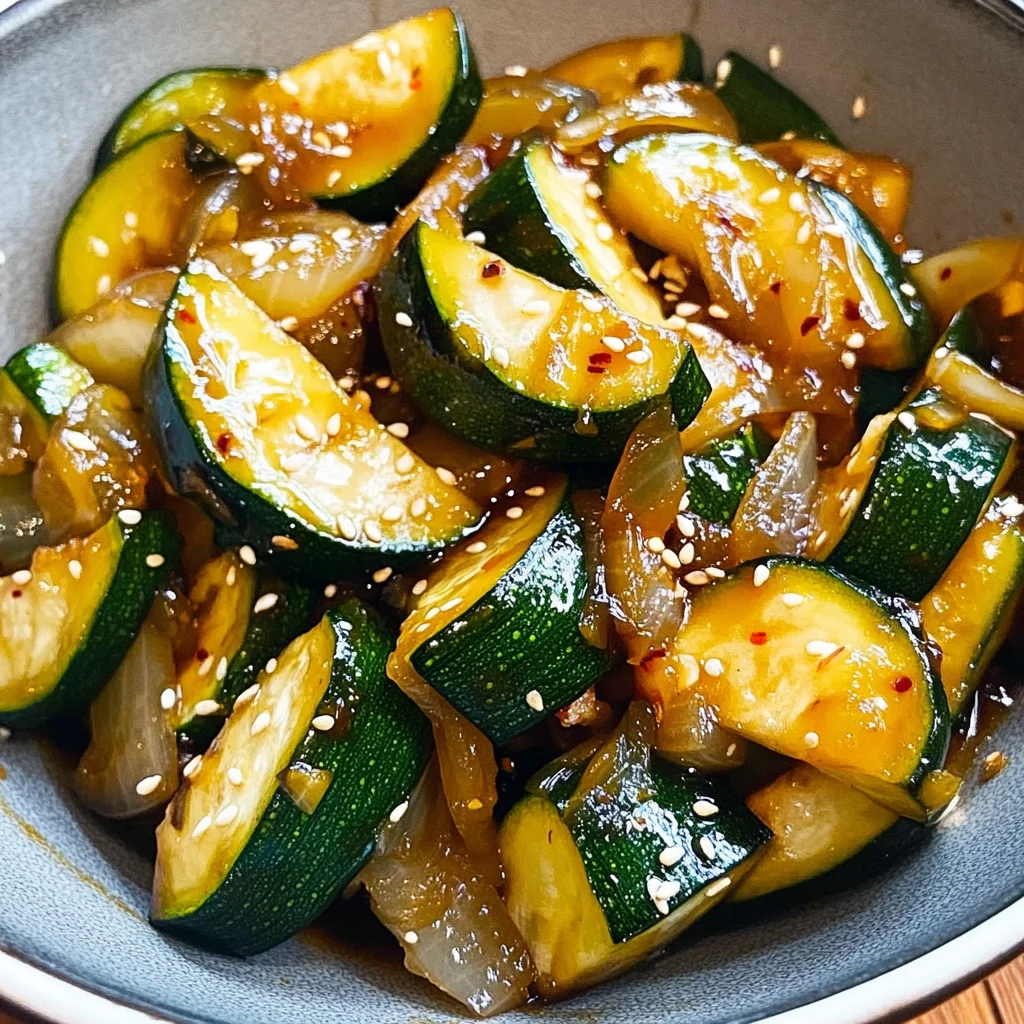
Storage & Reheating Instructions
Refrigerator Storage
-
- Duration: Store in an airtight container for up to 3 days.
-
- Temperature: Keep your refrigerator set below 40°F (4°C) for safe storage.
Freezing Japanese Zucchini
-
- Duration: Freeze for up to 2 months.
-
- Preparation: Blanch zucchini before freezing to preserve flavor and texture.
Reheating Japanese Zucchini
- Oven: Preheat to 350°F (175°C) and heat for about 10 minutes until warm.
- Microwave: Place in a microwave-safe container, cover, and reheat in 30-second intervals until hot.
- Stovetop: Add a splash of water or oil in a nonstick skillet over medium heat, stirring until heated through.
Frequently Asked Questions
Here are some common queries about making Japanese Zucchini that may help clarify any uncertainties.
What is Japanese Zucchini?
Japanese Zucchini is a type of summer squash known for its tender flesh and mild flavor, often used in Asian dishes.
How do I select fresh zucchini?
Look for firm, glossy skin without blemishes. Choose medium-sized zucchini for optimal flavor and texture.
Can I add other vegetables?
Absolutely! Feel free to mix in bell peppers or mushrooms for added color and nutrition.
Is this recipe vegan-friendly?
Yes, this Japanese Zucchini recipe is completely vegetarian and vegan, making it suitable for various dietary preferences.
Final Thoughts
Japanese Zucchini makes an excellent side dish that’s not only quick to prepare but also versatile enough to complement many meals. Feel free to customize it with additional spices or vegetables according to your taste preferences!
Japanese Zucchini
Japanese Zucchini is a delightful and vibrant side dish that combines tender sautéed zucchini with sweet onion, savory soy sauce, and teriyaki sauce, enhanced by a hint of spice. This quick and easy recipe takes just minutes to prepare, making it an ideal accompaniment to any Asian meal or grilled proteins like chicken, seafood, or steak. With its umami-rich flavors and colorful presentation, Japanese Zucchini will impress your family and guests at gatherings or weeknight dinners.
- Prep Time: 7 minutes
- Cook Time: 10 minutes
- Total Time: 17 minutes
- Yield: Serves approximately 4 people 1x
- Category: Side Dish
- Method: Sautéing
- Cuisine: Japanese
Ingredients
- 3 medium zucchini
- 1 medium sweet onion
- 2 tablespoons vegetable oil
- 2 tablespoons teriyaki sauce
- 1 tablespoon soy sauce
- 1/4 to 1/2 teaspoon crushed red pepper flakes
- 1 teaspoon toasted sesame seeds
Instructions
- Cut the zucchini into 2-inch long pieces and then slice each piece into 6 wedges.
- Heat vegetable oil in a nonstick skillet over medium-high heat.
- Add the zucchini and onion; sauté for about 2 minutes until they begin to soften.
- Pour in teriyaki sauce, soy sauce, red pepper flakes, and black pepper. Cook for an additional 4 to 5 minutes until the vegetables reach your desired tenderness.
- Sprinkle with toasted sesame seeds before serving.
Nutrition
- Serving Size: 1 cup (150g)
- Calories: 120
- Sugar: 4g
- Sodium: 480mg
- Fat: 7g
- Saturated Fat: 1g
- Unsaturated Fat: 6g
- Trans Fat: 0g
- Carbohydrates: 12g
- Fiber: 3g
- Protein: 3g
- Cholesterol: 0mg

